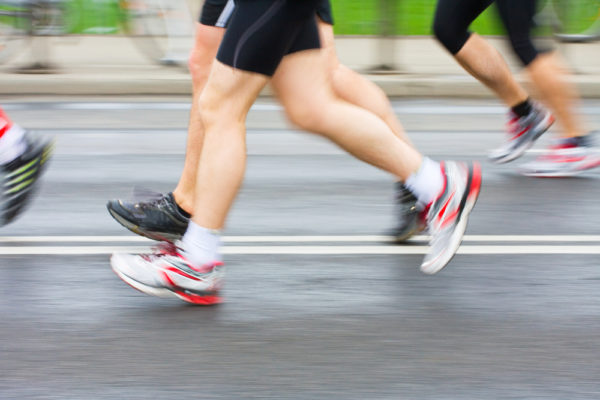
How important is how you run?
If you want to get active just run right? We all know how to do it don’t we? But is it that simple? Do we need lessons on how to run?
Currently there is a big debate about running technique – the 2 main camps being heel vs toe (or barefoot)
What’s the difference?
A normal step:
- Heel contact
- Outer foot, using the arch
- Roll onto the toes
- push off through the big toe.
This is called heel strike as you land on your heel first. But “Barefoot” or forefoot running suggests that if you land on the ball of your foot instead, you will be faster and more efficient as your foot spends less time in contact with the ground.
Heel Strike or overstriding?
People tend to look at changing their running style for 2 reasons:
- Speed
- Avoid injury.
But you could just be swapping one set of problems (knee and Achilles Tendon issues from heel strike) for another set (calf and ankle issues from toe strike).
More important things to consider:
Get forward – use lighter shoes with a lower heel to give you an upright, slightly forward leaning posture
Short steps –use short, fast steps not long, slow strides. Your foot should hit the ground directly under your bent knee.
Vary your training surface – rough surfaces teach you how to land softly.
Work on your core – the better your balance and core muscles the better you land.
Find your rhythm – aim for songs with 184bpm to run to.
Endurance vs Speed
Repeated studies of forefoot vs heel show that forefoot running may increase speed but heel striking is economical for your muscles.
Forefoot running may have more impact on sprinters’ times while endurance runners will find heel striking less tiring.
Injuries tend to be caused by muscle fatigue and overuse, so choose the most comfortable style for you and your running style.
The right shoe and support for the way you run is critical – extra heel cushioning if you’re a heavy heel striker, additional arch and metatarsal support if you prefer the forefoot style.

Leave a Reply